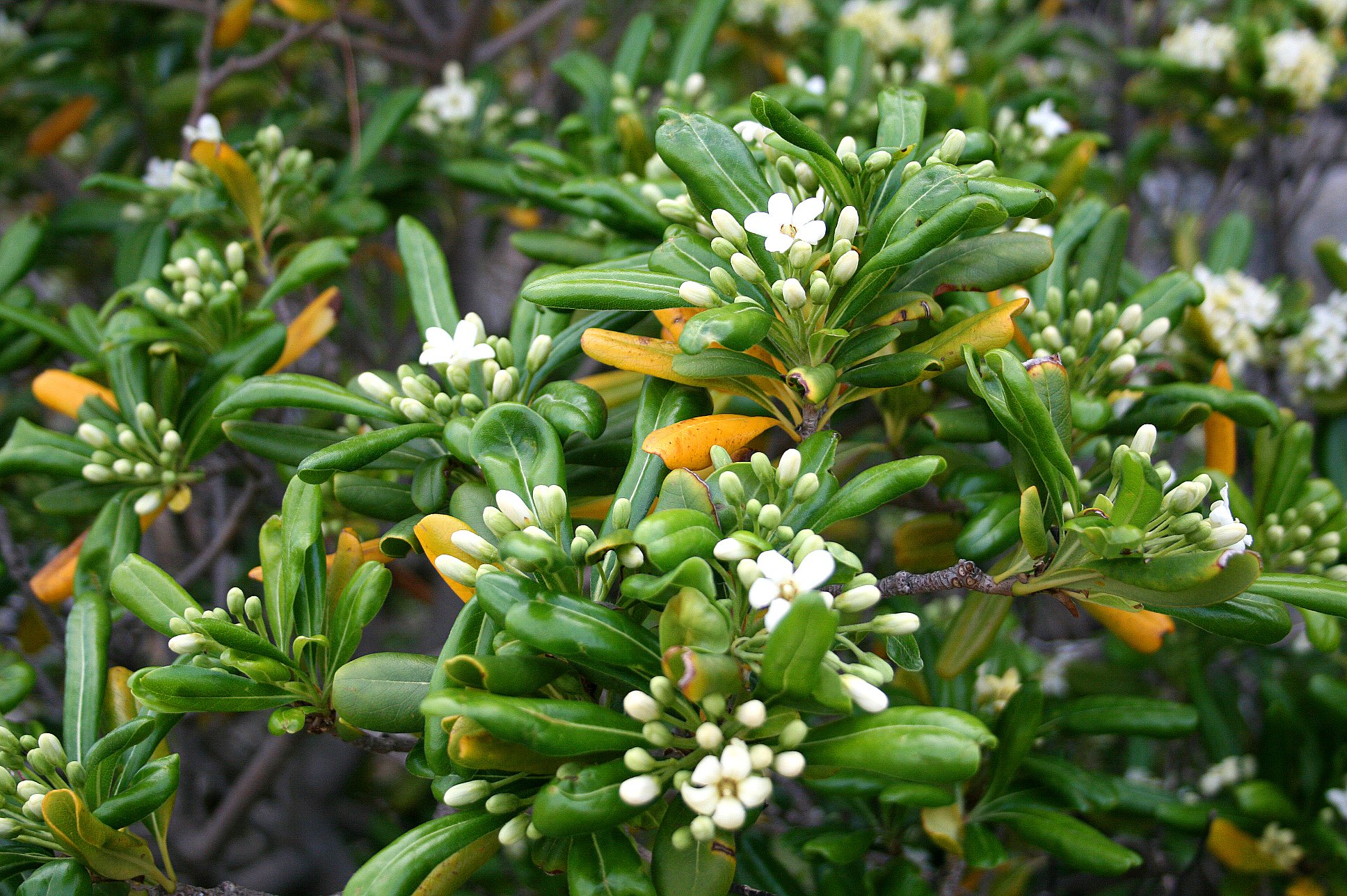Gardenia jasminoides (pronounced gar-DEE-nee-ah jaz-min-OY-deez) was previously known as Gardenia augusta. Native to Asia, it is one of the south’s classic shrubs. Gardenia shrubs thrive in heat and humidity, and require acidic soil. We have all three! They have a long flowering period, with single or double flowers than range from white to cream to almost-yellow.
Plant new Gardenias in spring so they will be well-established before the onset of cold weather. They prefer moist soil with plentiful organic matter, and partial or dappled shade, zones 7-11. Mature plants may reach heights up to eight feet. Several shorter cultivars are available, as well as some (‘Kleim’s Hardy’ and ‘Frostproof’ are two) that are more cold-hardy. Gardenia’s shallow roots dislike disturbance. Locate them away from trees or areas with strong winds. Avoid planting them next to concrete driveways or sidewalks that may leach lime into the soil. Use an acid-based fertilizer specifically formulated for Gardenias or Azaleas. Prune Gardenias in late winter or early spring to remove any dead or damaged branches. This will encourage new growth and keep the plant looking healthy.
Gardenias can be used as an evergreen hedge or as specimens in fragrance gardens or moonlight gardens. While their glossy leaves and sweet-smelling flowers can make them the star of summer garden tours, spent blooms fall to the ground and can look messy. Remove them for the neatest appearance.
Despite their heavenly fragrance, Gardenia does not make an ideal cut flower. Flowers react poorly to the touch of human skin, and their pristine white petals take on the yellow tint of old mayonnaise. If you choose to use them as cut flowers, take care to avoid contact between skin and flower petals.
Gardenias are susceptible to a number of pests and diseases, including scale insects, whitefly, mites, and root rot. Sooty mold is a frequent problem. Keep an eye out for any signs of infestation and treat promptly to keep your gardenia healthy. They are prone to damage by deer. While Gardenia can be grown as a houseplant, whitefly is a common problem.







